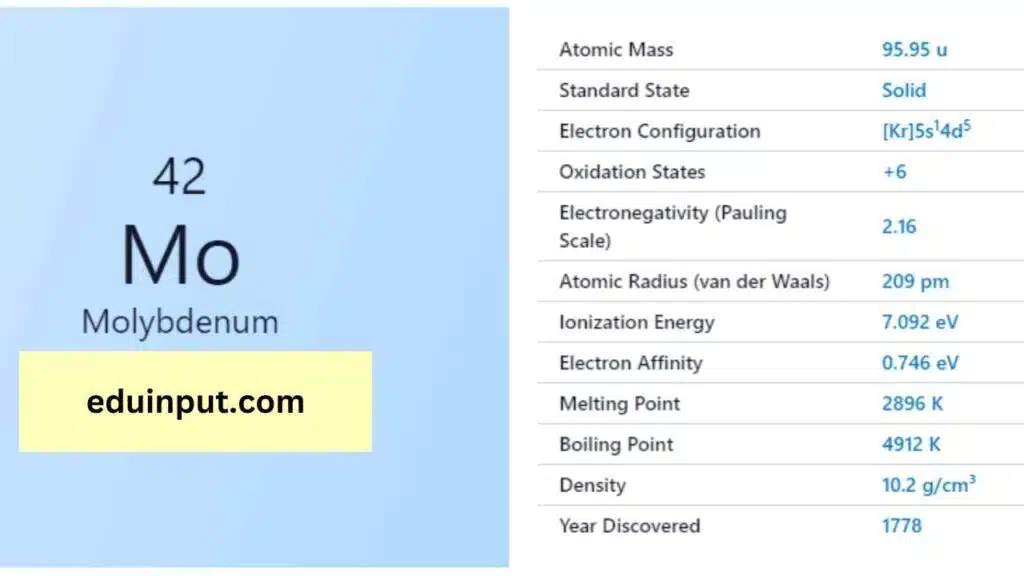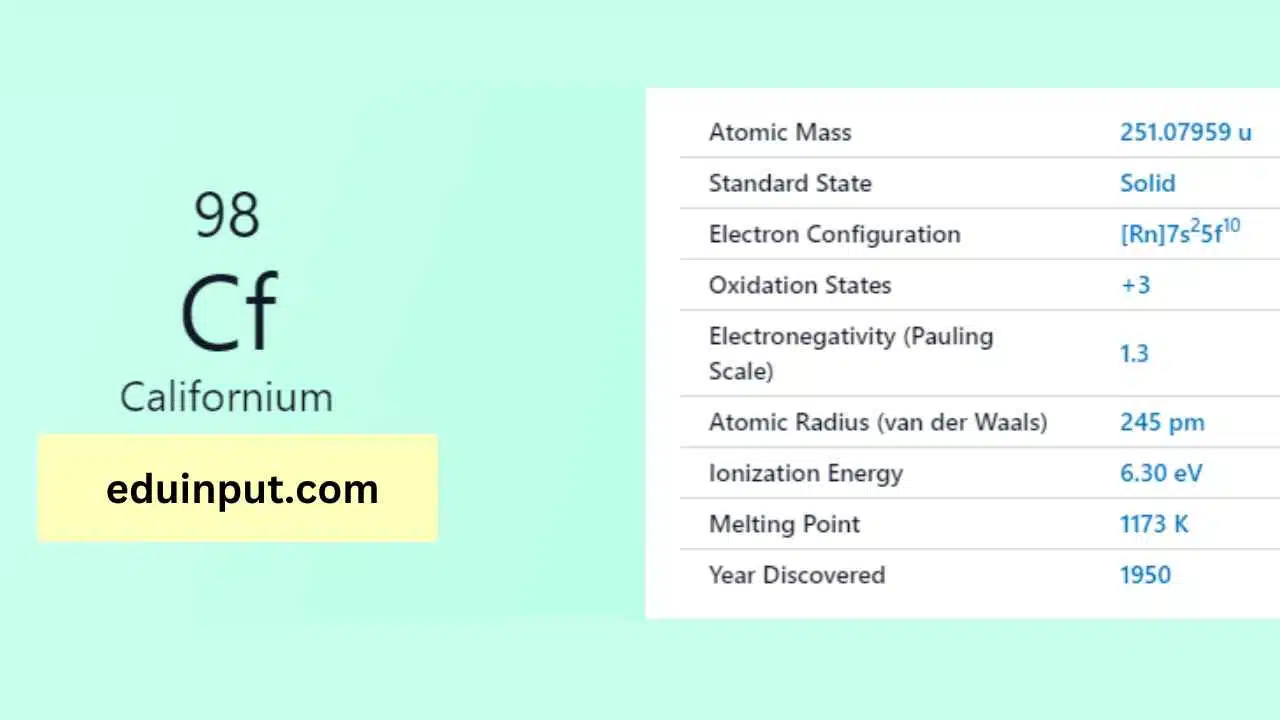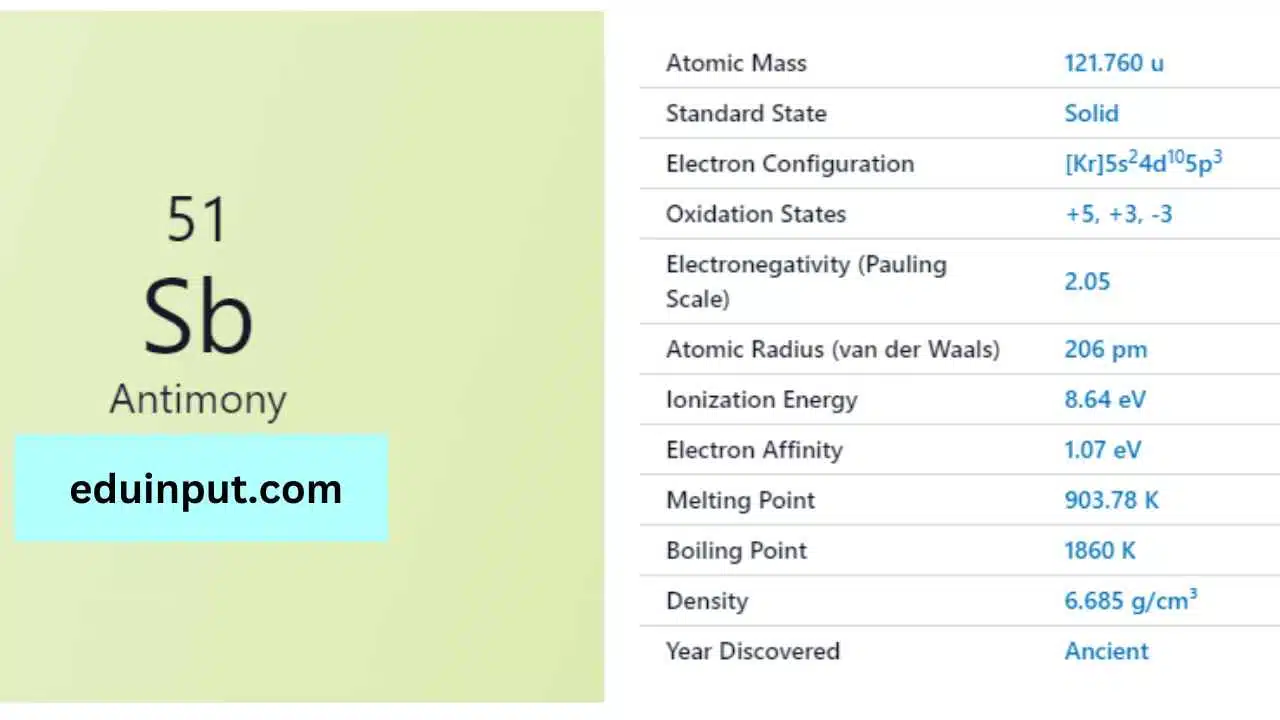Molybdenum-Discovery, Properties, And Applications
Molybdenum is a chemical element with the symbol ‘Mo’ and atomic number 42. It is a transition metal with a silvery-white color and a high melting point of 2,623°C. Molybdenum is a versatile metal that has many applications due to its unique properties, including its high strength, toughness, and resistance to corrosion and high temperatures.

| Property | Value |
| Name | Molybdenum |
| Symbol | Mo |
| Atomic number | 42 |
| Relative atomic mass (Ar) | Block in the periodic table |
| Standard state | Solid at 298 K |
| Appearance | Grey metallic |
| Classification | Metallic |
| Group in periodic table | 6 |
| Group name | (none) |
| Group in the periodic table | 5 |
| Period in the periodic table | d |
| Shell structure | 2.8.18.13.1 |
| CAS Registry | 7439-98-7 |
Discovery
Molybdenum was discovered by Carl Wilhelm Scheele, a Swedish chemist, in 1778. However, it was not until 1781 that Peter Jacob Hjelm, a Swedish chemist, was able to isolate the element and produce a pure sample.
Physical Properties
Molybdenum is a hard, ductile metal that has a high melting point of 2,623°C and a boiling point of 4,639°C. It has a density of 10.28 g/cm³ and a Mohs hardness of 5.5. Molybdenum is also highly resistant to corrosion and can withstand high temperatures, making it ideal for use in high-stress applications.
Chemical Properties
Molybdenum has an electron configuration of [Kr]4d^55s^1 and can form compounds in various oxidation states, ranging from -2 to +6. Molybdenum is used in the production of alloys, including stainless steel, which contains up to 8% molybdenum. Molybdenum also has high thermal and electrical conductivity and is used in the production of electrical contacts, filaments, and heat sinks.
Facts
- Molybdenum is the 54th most abundant element in the Earth’s crust.
- Molybdenum has the sixth-highest melting point of all elements.
- Molybdenum is a vital nutrient for plants and animals, playing a role in nitrogen metabolism.
Applications
Molybdenum is widely used in various applications due to its unique properties. It is used in the production of alloys, including stainless steel, which is highly resistant to corrosion and used in the construction, medical, and food industries.
Molybdenum is also used in the production of electrical contacts, filaments, and heat sinks due to its high thermal and electrical conductivity. Additionally, molybdenum is used in the aerospace industry for its high strength and toughness.
Molybdenum is a versatile metal with many applications due to its unique properties. Its high strength, toughness, and resistance to corrosion and high temperatures have made it a valuable material in the production of alloys, electrical contacts, filaments, heat sinks, and aerospace components. Molybdenum is a vital nutrient for plants and animals, highlighting its importance in both industry and biology.







Leave a Reply